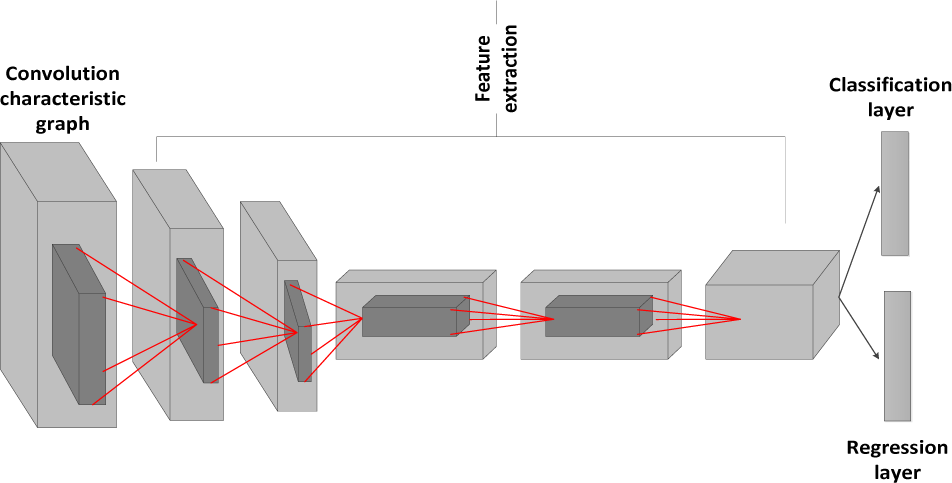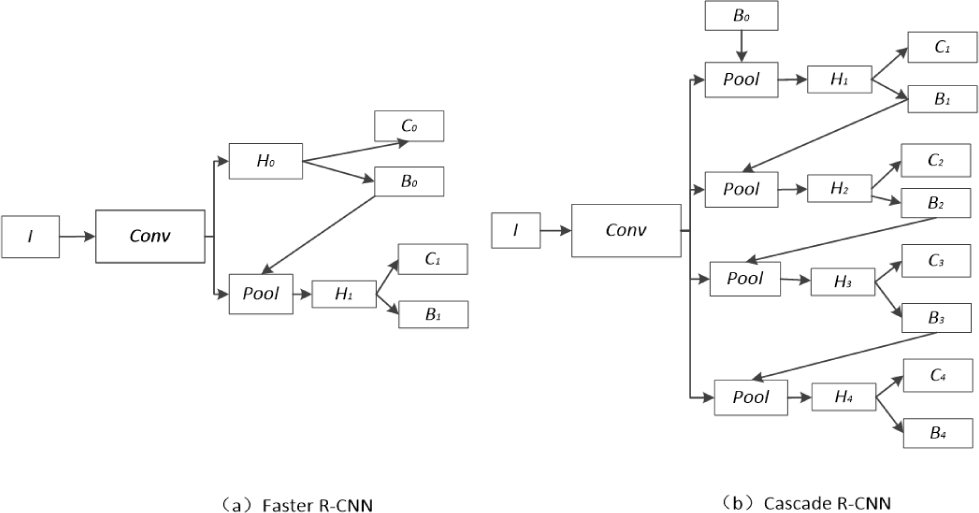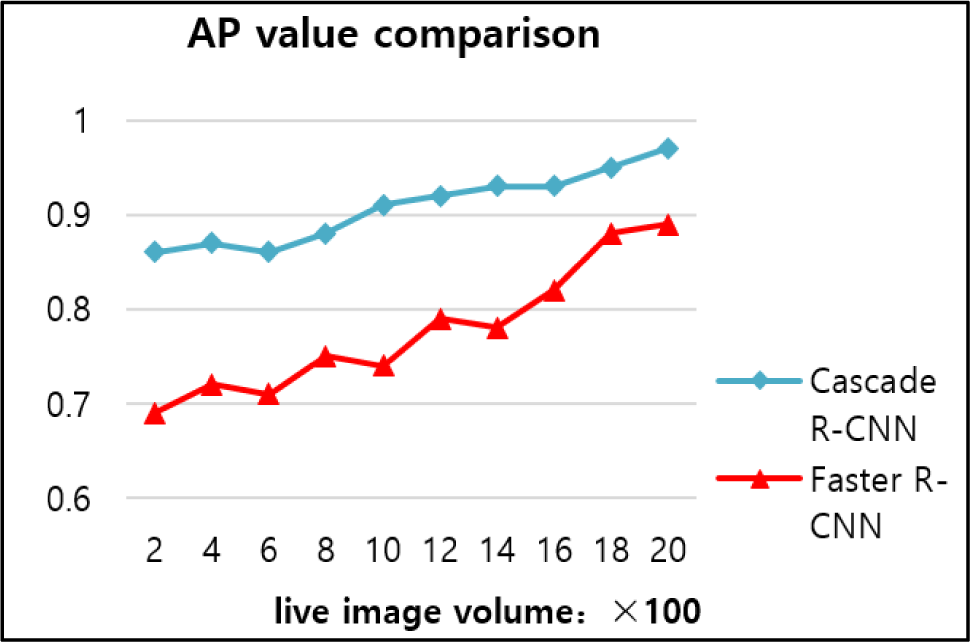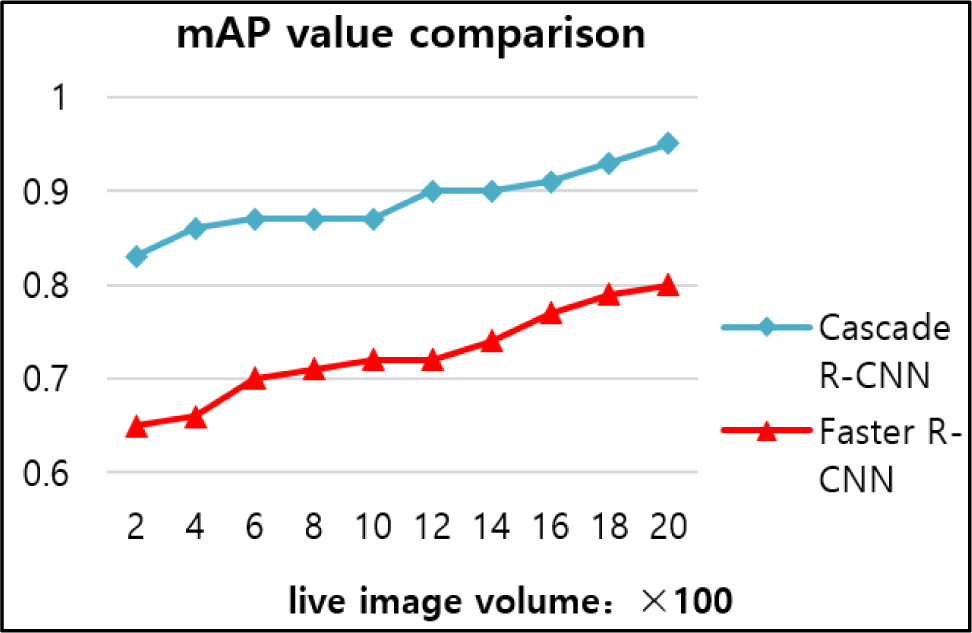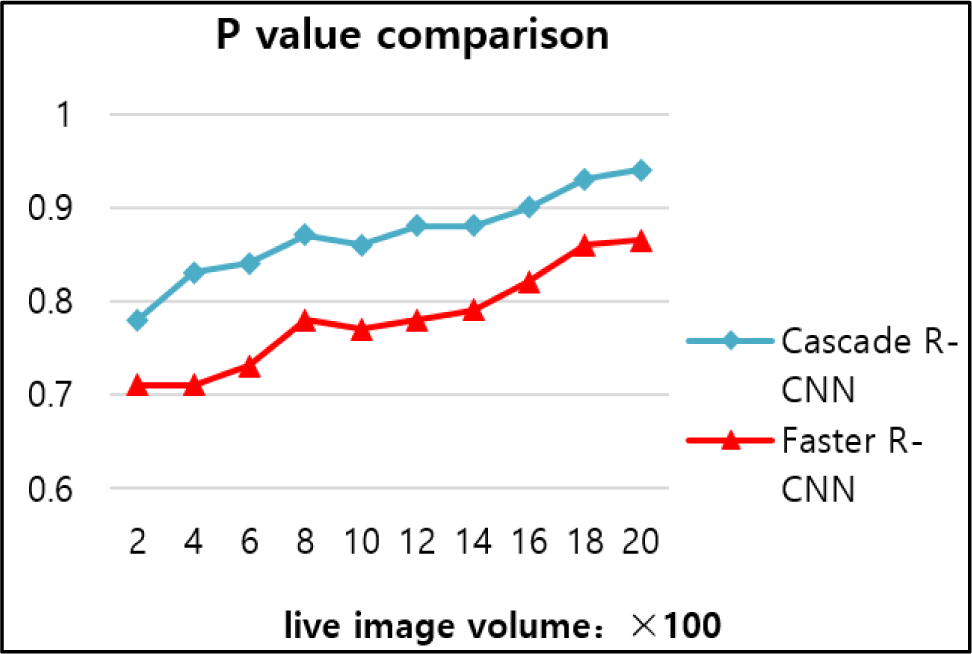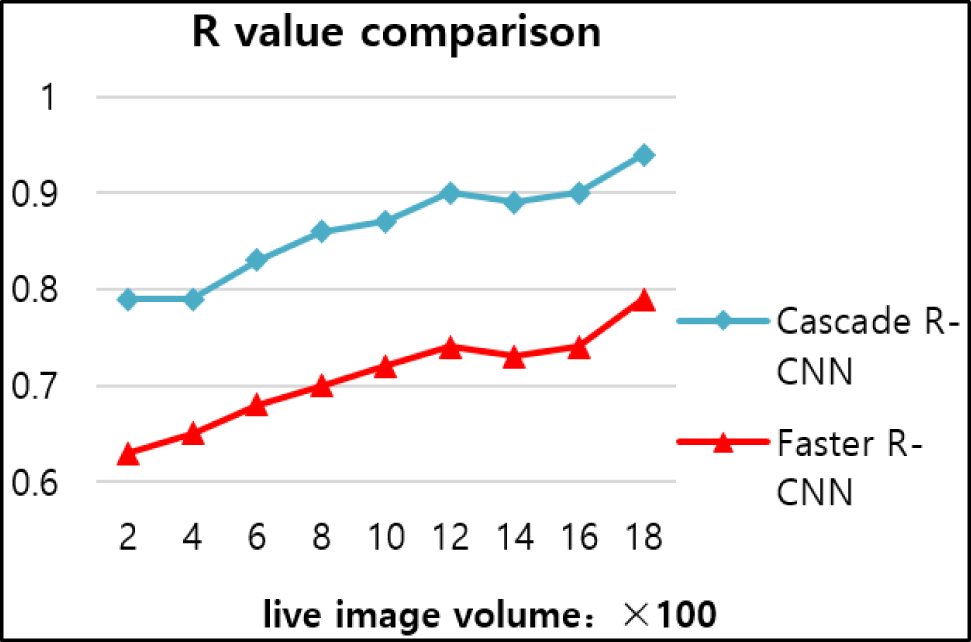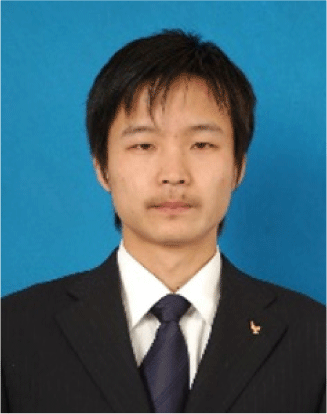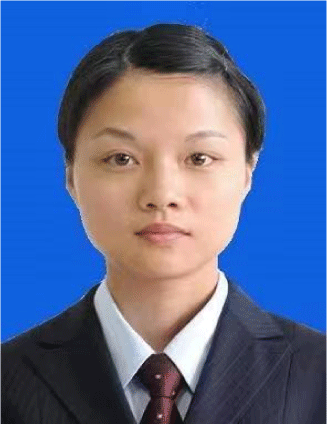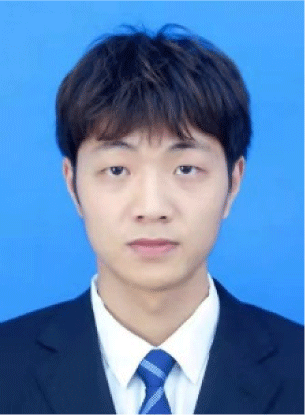I. INTRODUCTION
With the progress of society and the continuous growth of economy, the consumption of electric energy is raising year by year. For meeting the demand of economic development and life, the scope of the transmission lines is expanding. The safe and stable operation of large regional power grids is the basis for national economic development and social stability, and the losses caused by transmission lines problems are incalculable [1]. It is a significant work of each power company to regular detection of transmission lines. Through the detection of transmission lines, potential security risks can be found and eliminated as early as possible to ensure the security and reliable working of the power network [2]. Due to the vast territory, complex terrain and terrain, the transmission lines cover a wide range of areas. It is inefficient and has a certain threat to the life safety of detection personnel. With the continuous increase of high-voltage transmission lines and the expansion of power grid scale, a number of cross regional interconnected large power grids have been formed. And the cross regional large power grids have proposed higher demands for detection. The rapid development of all industries is inseparable from electricity. The national daily power consumption has also reached the highest level in the world. The corresponding power system has been expanded continuously. Its transmission towers cover all parts of the country. The corresponding mileage of transmission towers has increased. The power grid structure is relatively complex, with a wide overhead range and complex distribution terrain. Therefore, there are growing security risks of transmission lines. The transmission lines are proposed to the air and inevitably damaged by various human or non-human factors. Therefore, regular inspection and maintenance of transmission lines are required. The traditional transmission lines inspection mainly relies on manual detection [3]. This detection method mainly relies on professionals to go to the detection site to perform manual climbing work in a high-voltage environment. The staff needs to climb hundreds of meters high and step on the transmission lines for manual inspection. In special places, clouds and fog are swirling high above the ground. The constant weather changes not only affect the work efficiency of the staff, but also have great safety problems. The workers need to travel thousands of meters in the high air every day for operation. There is great psychological pressure, and the terrain in the field is complex, especially on mountain roads. It is difficult to transport equipment. These problems make manual detection face great challenges. With the complexity of the power system, this manual detection method can no longer meet the current detection of transmission lines [4]. Therefore, it is urgent to turn the power detection into intelligent power detection.
Digital twin is a kind of mapping relationship between virtual space and virtual space, which is a combination of virtual space and real space, as well as intelligent manipulation. The optimal allocation of information resources and material resources in the detection of transmission lines based on twin reality system can be realized by recording, simulating and forecasting the running track of objects in the digital virtual space and material world in the entire life cycle [5-6]. As an integrated technology that makes full use of models, data, intelligent algorithms and other disciplines [7], digital twin can reproduce the scene of communication maintenance work area in virtual space. Digital twin can connect the material world and digital world by gathering actual-time data of facilities and equipment [8]. So digital twin can realize the understanding, analysis and optimization of physical entities. By collecting and analyzing the state data in the transmission lines, the twin reality technology realizes the virtual reality interaction between the virtual line and the transmission lines, realizes the monitoring of the whole transmission process, and provides a possible way to realize the stable operation of intelligent transmission.
In some mountain areas and river areas, the span of transmission lines is large, and the geographical environment where the iron tower is located is harsh. In this case, the inspectors will spend a lot of time climbing the tower and patrolling the lines, unable to timely find and repair the damaged electrical equipment. The emergence of twin reality is rooted in the centralized explosion of perception, network, control, modeling and other technologies, especially the development of sensors and low-power wide area technology, which can accurately and timely feed-back the dynamics of the material world to the digital world through sensors [9]. Digitalization and networking realize the transformation from reality to reality, and networking and intelligentization realize the transformation from virtual to reality. Through the interaction and continuous iteration of virtual and real, the original and orderly operation of the physical world is realized. The detection of transmission lines according to the predetermined trajectory can not only greatly save costs, but also timely discover the transmission lines’ underlying safety hazards [10]. The detection technology based on machine vision, artificial intelligence and so on has developed vigorously and been applied in diverse areas. With the rise of artificial intelligence and computer vision, target recognition algorithms based on deep learning are constantly emerging, providing a new development direction for twin reality detection [11]. Automatic recognition of twin reality images using deep learning recognition algorithm can not only complete the detection task quickly and accurately, but also save a lot of costs. This will be the development trend and research hotspot of power detection in the world, and has important application value [12].
In this paper, the detection of transmission line data sets is established through the research of background significance and twin reality related basis. Then the algorithm and experiment of detection of transmission lines are summarized and prospected. Through the research of background significance and dual reality related basis, the detection of transmission line data set is established. The main contribution and structure of this paper are as follows:
-
Firstly, the background and significance of transmission lines research based on twin reality are introduced, and the research of deep learning detection algorithm is represented. Finally, the primary research content and organization structure of this paper are introduced.
-
The theory of deep learning is studied and analyzed, the Faster R-CNN and Cascade R-CNN dare emphatically introduced. The experiment analyzes and compares the effect of the algorithm through accuracy and other indicators. The application of Cascade R-CNN in the detection of transmission lines based on twin reality system has good advantages.
-
The analysis and detection of transmission lines based on twin reality system is carried out and implemented. The deep learning algorithm studied in this paper is used to design and implement the system. The system framework, components and realizable functions are introduced. Finally, the effect of analysis and detection of transmission lines based on twin reality system is presented.
The rest of this paper is formed of four parts. The second part is the literature related to our work in this paper. The third part introduces in detail the detection of transmission lines based on twin reality system platform as well as the deep learning algorithm. The fourth part analyzes the proposed algorithm and design system through experiments. Finally, we summarize the main research contents and conclusions of this paper.
II. LITERATURE REVIEW
In the “virtual world” built by digital twins, the real scene of video capture is superimposed to further integrate the virtual and real to build a twin reality. Digital twin combines virtual reality, augmented reality, intelligent video and other technologies to become a digital twin reality [13]. In 2012, NASA and the US Air Force Research Laboratory jointly proposed to build a physical twin model of the future aircraft in digital space [14]. It defined the twin reality as a highly integrated multi-scale, multi physical field and multi probability simulation model. It made full use of sensors, physical models and other real-time responses to the full life cycle of physical products.
Based on the concept of digital twin technology given by NASA, many scholars had continuously supplemented and improved the concept of digital twin in recent years. Tao et al. [15] discussed workshop operation mode, workshop information physics theory and technology, five-dimensional structure model, digital twin technology application construction theory and other issues. Ward et al. [16] proposed a machining digital twin and a new online machine induced residual stress control system. It could realize actual-time model simulation and online feedback by performing actual-time adaptive regulation on intelligent machining operations. Wang and Wu [17] built a digital twin-based projecting system model to manage and control uncertain factors in workshop scheduling. Bai et al. [18] built a real physical intelligent factory platform based on digital twin technology, optimized the layout effect of production lines using genetic algorithms, and effectively improved the effect and accuracy of lean production. Bedir and Cor [19] proposed a pattern oriented near to the design of digital twin systems to build digital twin systems. Wang et al. [20] put forward improved 3D-VGG and 3D-ResNet deep learning models to achieve good interaction between people and machines.
With the advancement of deep learning and computer vision, scholars had applied deep learning-based methods to the detection of transmission lines. They mainly used the deep learning framework to automatically identify different power equipment in twin reality images. The efficiency and accuracy of manual identification had been greatly improved. Some human and physical resources had been saved. Tan & Geo et al. [21-22] applied the deep learning algorithm to the identification of insulator state, which had high precision and actual-time performance. The combination of recognition algorithm based on deep learning and detection of transmission lines was the current research hotspot. Computer digital security was also a factor to be considered [23]. At present, the intelligent detection mainly relied on the UAV to carry cameras to obtain the information of power components, so as to find faults and feed-back information in actual time. Therefore, the detection of key parts of transmission lines was applied based on deep learning and twin reality. The detection of transmission lines included the detection based on image morphological features and the detection based on deep learning. The detection based on image features was mainly based on image morphological features, such as edge, color, shape, texture and other features. According to the difference of pixels or contour, key features were extracted to identify the required targets. Dutta et al. [24] had detected the transmission tower from the complex background according to the morphological and spatial characteristics of aerial images. Based on the foreign matter processing of transmission lines, Jiao and Wang et al. [25] adopted the combination of Euclidean distance method and regional drift prediction to remedy the problem of key data redundancy in foreign matter detection of transmission lines. K-means algorithm was used to cluster the features of fast image orientation and simple rotation. It generated a six-parameter model based on K-ORB features, obtained the target area through three frame difference, filtered the target area through anomaly ratio analysis, eliminated the interference area and identified foreign matters in the image. Huang et al. [26] proposed a foreign object detection method for transmission lines based on salient computing features. This method focused on improving the accuracy of transmission lines extraction and integrating salient detection into the foreign object detection process. For lines segment detector, statistical color filtering was used to perform pixel level fitting to match the color features of the transmission lines. Then, according to the feature that foreign objects always appeared outside the region in the image sequence, significance calculation was used to uniformly extract foreign matter on the transmission lines. Tao et al. [27] proposed a multi accessory detection method based on knowledge region hybrid convolutional neural network (HKR-CNN) to solve the problems of complex background, small target, long tail distribution, etc. Miao et al. [28] proposed a local dense YOLO (CSPD-YOLO) model based on YOLO-v3 and cross level. CSPD-YOLO model improved the accuracy of insulator fault detection and loss function by adopting characteristic pyramid network. Zheng et al. [29] solved the problem of few samples and complex background of defective insulators by proposing a detection method for defective insulators based on YOLO and SPP Net.
Analysis and detection of transmission lines based on deep learning network could adopt the method of creating twin reality data sets. Then the models or algorithms were applied to train the datasets to achieve the effect of deep learning. Compared with the detection of transmission lines based on morphological features, this method not only had less computation, but also had better recognition accuracy.
III. DETECTION OF TRANSMISSION LINES BASED ON TWIN REALITY
The twin reality is to create a digital "clone" based on the entity objects of the physical world. This "clone", also known as the "digital twin", is virtually created on the information platform [30]. Compared with design drawings, digital twin can realize dynamic simulation of solid objects. It restores the physical model, actual-time state and external environmental conditions of the real object to the "twin", with various data types and complex interfaces. In addition, due to the accumulation of design and data, the transmission data system is huge. Building a reasonable system architecture and deep learning algorithm is the basis for realizing detection based on twin reality application.
Digital Twin technology uses specific software and hardware device tools to digitally present the entire lifecycle and operational state of physical entities. It processes and analyzes collected state data through in-depth learning, heterogeneous data fusion, and other technologies, using the collected data as a model driver to achieve virtual and real interaction between physical models. Combining digital twin technology with artificial intelligence and deep learning technology can achieve real-time dynamic updates to models. Through the analysis of historical data, it is possible to analyze the operational status of the system and predict future development based on the trend of data changes. With the increasingly widespread application of digital twin technology, it has become the focus of attention and also the trend of future technological development.
For improving the slow detection speed of R-CNN and Fast R-CNN, which are both two-stage detection algorithms, RPN network structure is a way to solve these problems [31]. This way has the advantage of combining neural networks and candidate box acquisition, which can promote the detection efficiency of system with effect. Fig. 1 shows the RPN structure diagram.
The network does not conduct selective search but uses RPN to generate candidate regions. In the procedure of candidate region generation, each pixel in the feature map will generate multiple bounding boxes, which is based on the offset of corresponding anchor points on distinct scales. After selecting candidate regions, these characteristics are mapped by classification and regression by setting to two networks. The regression of RPN is the offset coordinate between the predicted anchor and the real box. The application of RPN is the main advantage of Faster R-CNN method, which can enhance the representation of the system. Faster R-CNN mainly has four layers:
-
Feature extraction network. In this part, the input twin reality scene whole picture is taken, and the convolution feature picture is taken as the output. The major function is to preprocess the input twin reality pictures and set the input information around the beginning of the coordinate system, which can decrease the different errors with effect owing to different value ranges. Then the generated feature map is transferred to the RPN network for full connection layer sharing.
-
Regional recommendation network. This part inputs the feature map and outputs multiple candidate boxes for the system to use. This layer will first transfer the final feature map of (1) to the RPN network, and then generate candidate boxes by sliding windows.
-
ROI pooling. The input is the candidate box and feature map in this layer, and then the size of the candidate box is unified as the output. The role of this layer is to input the obtained feature map and candidate box into this layer, and output the candidate box feature map with consistent scale. The shape and size of candidate regions generated by RPN are different, but due to the characteristics of fully connected layers, only candidate regions with the same input size can be accepted. ROI pooling can effectively solve this problem. This method is a simplified application of spatial pyramid pooling. The general application environment of the method is generally to adjust the input size, while it is powerless for computational analysis issues.
-
Softmax classification and border regression. The function of this part is to classify the results obtained in the previous steps, and obtain the final target location based on the classification results and regression operations.
In general, the algorithm steps of Faster R-CNN are as follows. First, the image is inputted into the network for recognition. Then the abstract features of the graph are obtained. Then the obtained abstract feature graph is processed in RPN to obtain an excessive number of candidate boxes for use. Third, the candidate box in the previous step is used as input to the ROI pooling layer to unify the scale of the candidate box. In the last step, the previous results are inputted into the softmax classifier for classification. Then the boundary regression is used to correct the target region to get the final results.
Convolutional neural network is also called feature extraction network, which has various categories. The result of feature map extraction is the key factor of training effect. The generated feature map will be sent to the RPN network generation candidate box, and then to the most comprehensive connection layer for classification and regression. Therefore, the training effect will be determined by the quality of the feature map. The known convolution calculation formula is shown in (1).
where, insize is the size before convolution, outsize is the size after convolution, Fsize is the size of filter, P is the size of boundary filling, and S is the step size of convolution. Thus, the formula for calculating receptive field can be derived:
where F(i) is the receptive field of layer i. Assuming the dimension of the feature map is 1, then:
Therefore, the stacking of 3×3 filters can effectively reduce the calculation parameters, and at the same time, it will not increase the amount of data. Therefore, this method can deepen the network depth of the neural network.
Faster R-CNN achieves fast and high-precision detection performance through RPN. The two-stage detection network can better solve the problems of multi-scale and small target. It is more accurate than other single-stage detection networks. In addition, Faster R-CNN is easy to transfer and display fine on multiple datasets. Easily change the test model by changing the target class in the dataset. The network has a lot of optimization space. However, Fast R-CNN will judge whether a candidate box is a positive sample or a negative sample through IoU. The default threshold is 0.5. The selection of threshold is a contradiction actually. When the threshold is set higher, the position of the detector will be more accurate, and its RoI will be approach to the entity, but this will result in less positive samples, less qualified candidate boxes for training, and more uneven sample distribution. Instead when the threshold is very low, it will be beneficial to training, because there are lots of positive samples, single error detection and error increase. Therefore, it is difficult to use a threshold defining positive and negative samples to achieve the best detection effect for all IoU input candidate boxes.
During the training of Faster R-CNN, IoU threshold is used to delimit positive samples and negative samples. If a lower IoU threshold is used, a large number of background frames will be learned and a large number of noise predictions will be generated. However, if a high IoU threshold is used, the performance of this detector will often become poor. The detector usually has better results when the IoU threshold of the proposed network itself is close to the IoU threshold of the detector training. If the difference between the two is large and does not match, it is difficult to produce good detection results. Therefore, Faster R-CNN is improved and Cascade R-CNN network [32] is putted forward to solve this problem.
Cascade R-CNN network is a sequential multi-stage detection network. It uses the output of the prior phase for the training of the next phase. High IoU threshold can be obtained in late stage. The high IoU threshold is used to generate a higher quality candidate box. Multi threshold detection is used instead of Faster R-CNN single threshold detection. Through continuously increasing threshold, a high-quality detection network is trained without reducing the number of samples.
The classical two-stage structure is extended to a multi-stage structure through cascaded R-CNN. The comparison of the algorithm structures before and after the improvement is displayed in Fig. 2, where I is the input, the basis of the convolutional neural network is the convolution layer, B0 is the candidate box produced by the regional proposal network, pool is the pooling layer, C1, C2, C3, C4 are classification networks, and B1, B2, B3, B4 are boundary box regression networks. In this paper, detectors for H2, H3, and H4 are added on the traditional basis. The detector threshold for H1 is still u=0.5, the detector threshold for H2 is u=0.6, the detector threshold for H3 is u=0.7, and the detector threshold for H4 is u=0.8. The input of H2 is the regression output of H1's bounding box. The IOU of H2 will be improved on the basis of 0.5. Similarly, the input of H3 is the output of H2's bounding box. Through this form, the detection structure has not only H1’s conventional bounding box output, there are also better threshold detector outputs, and these perceptrons are trained in segments by increasing IoU thresholds.
The reason for improving the multi-stage algorithm is that the features learned by the algorithm in the first stage are relatively shallow, and the training is not sufficient. Therefore, it is necessary to use the training results of this algorithm to detect the data set of flawless samples, and detect the flawless samples. A great deal of false detections have been found. Therefore, this paper believes that the results of this part of false detections are a good counter sample, and this false positive sample can be added to the training set of the algorithm. Let the algorithm directly learn the features of live twin images without defects, so that the algorithm can learn better features.
A perceptron outputs a good data distribution as input to train the next high-quality perceptron. In each stage the high-quality positive sample training is implemented by setting different IoU (intersection/union) thresholds. This will be much better for false positives. The IoU threshold is reasonably improved without the mismatch between the IoU threshold proposed by the previous region and the IoU threshold trained by the detector. The structure of the right figure (b) in Fig. 2 depends on a series of special regression factors, as displayed in Equation 6, where T is the sum number of cascaded stages. It ensures the continuous improvement of the quality of a series of effective detectors.
In the cascade, it should be noted that each regression factor fT is optimized relative to the sample distribution, rather than the initial distribution at the corresponding stage. This cascade mode makes the model improved step by step. Cascade regression starts with the kind of examples (xi, bi), and resamples the sample allocation(x’i, b’i) of higher IOUs. So even if the IOU threshold value increases, the number of regular sample subsets at each stage can be kept constant.
The software system is generally divided into front-end and back-end. The front-end mainly includes the user’s interactive interface, along with the collection, verification, analysis and display of various data [33]. The back-end includes business logic processing and data persistence storage. For increasing the scalability of the system, the system adopts the RESTful architecture style. It adds a service layer between the front-end program and the back-end program to achieve the separation of the front and rear ends. It forms a three-layer digital system architecture of the presentation layer, application layer and data layer. So the system can encapsulate different businesses in the form of modularization and componentization, and select the optimal module assembly method to provide accurate business services to different objects on the basis of the actual situation.
The three-layer digital system architecture avoids direct access to the data layer by the presentation layer, which is only associated with the application layer, improving data security. And it is conducive to the decentralized development of the system. Each layer can be developed by different personnel, as long as the interface standards are followed and the same object model entity classes are used, which can greatly improve the development speed of the system. In addition, the project structure is clearer and the division of labor is clearer, which is conducive to later maintenance and upgrading. Fig. 3 shows the overall architecture of the detection of transmission lines based on twin reality system.
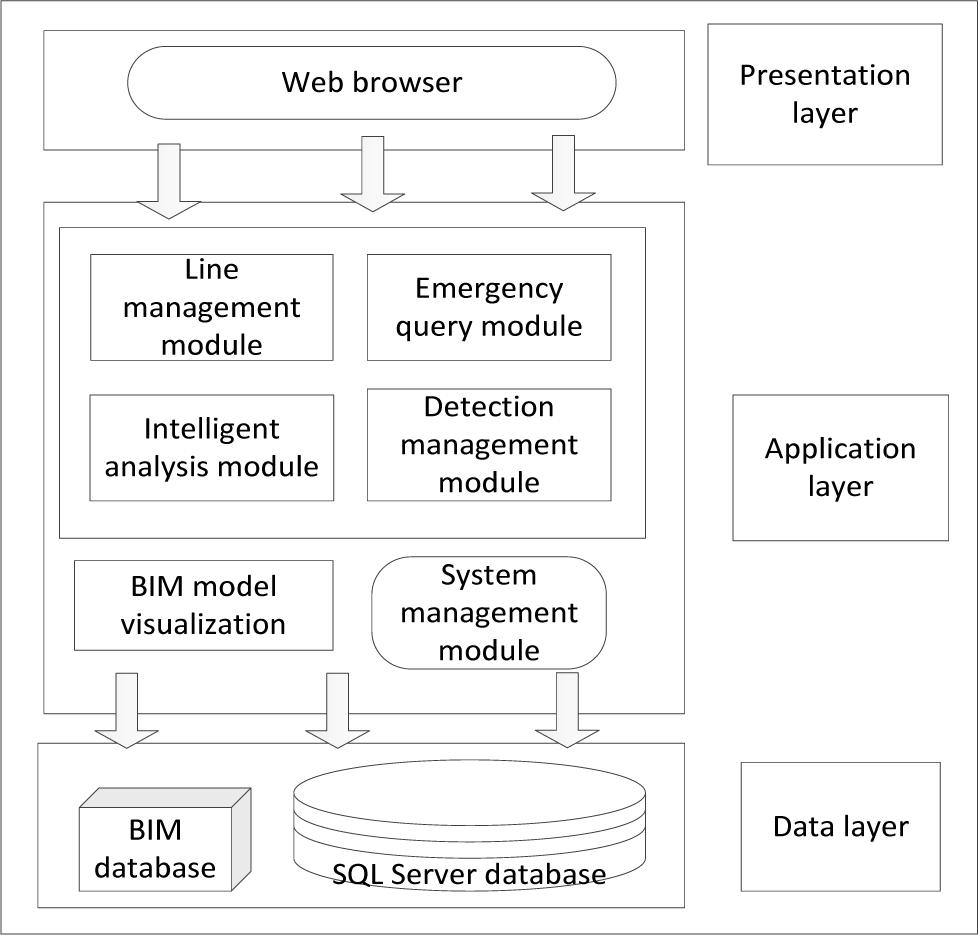
Data layer design mainly considers two parts: (1) Data acquisition includs actual-time information of transmission lines equipment during operation and lines maintenance data. (2) Data storage includs persistent storage for massive multi-source heterogeneous data in the system.
It is essential to consider the data acquisition and data transmission mode of existing lines and systems in data acquisition. During transmission operation, the data of lines facilities, network resources and management process can be collected in actual time through network management. It tracks other support management systems, including the working status of the lines,external environmental conditions, etc. In the processof detection of transmission lines, RFID (Radio Frequency Identification) and other technologies can be used to identify maintenance object information. The collected data needs to be extracted according to the interface requirements of relevant systems, complete format conversion and data cleaning, and finally transferred to the system database for storage.
The application layer mainly completes the logic processing of each business module in the communication maintenance system. The request and data of the module are published in the form of WebApi services for the presentation layer to call. At the same time, it interacts with the database server through the database access interface technology.
The design of the application layer needs to consider reserving external system data access ports, and the accessed data is stored in the database after identification, conversion and integration. Through the fusion of multi-source heterogeneous data in the data layer, and artificial intelligence algorithms such as deep learning, the fusion information is analyzed and processed to quickly locate the fault location of detection of transmission lines. The probability of fault occurrence and maintenance cycle are predicted to optimize the maintenance process. The refined management of personnel and equipment has been strengthened, providing strong support for the analysis and detection of transmission lines.
The presentation layer straightly connects with users, which is at the top of the three-tier architecture. In the communication live maintenance system, it is the browser page, including the lines display page, BIM live page, lines maintenance page, resource management page, emergency query page and employee training page. It aims to realize multi-level visualization of transmission lines information from micro to macro, provide lines maintenance, lines positioning, emergency query and other one-step integrated information query and processing functions for maintenance, and enhance the intelligent and digital standard of detection of transmission lines.
The presentation layer obtains the output result information of the application layer through the limiting surface. Because the business logic algorithm is mainly focused on the application layer, it reduces the calculation pressure of the presentation layer and enables it to focus more on the rendering ability and presentation effect of the page. On the BIM live page, based on 3D visualization and interaction technology, the physical 3D model, spatial location, actual-time working status, port connection relationship and other information of the communication equipment are displayed through the twin reality objects. In addition, when designing the presentation layer, we must consider the work nature and operation habits of different users, introduce modular and component-based development ideas and design patterns, reduce the coupling between modules, and realize the pluggable design of the presentation layer functions.
IV. EXPERIMENT AND RESULT ANALYSIS
This paper trains the network through Visual Studio Code. The operating system is Windows7. AMD RYZEN7 processor and Nvidia Ge Force GTX 1650 graphics card are used. The number of GPUs is 8. The batch size of the input data designed in the experiment is 10, and the image adjustment scale is 416×416. The number of iterations is 100, the initial value of the learning rate is 0.0001, and the value of the end learning is 0.000001.
The detection performance index adopted in the experimental evaluation part is the average accuracy AP [34], which refers to the accuracy of the deep learning algorithm in a certain category. It represents the evaluation of the training model for a certain training category, and is the region under the P-R curve. The calculation formula is as follows:
TP is the real sample, representing the amount of positive kinds successfully calculated as positive kinds. FP is the false positive sample, representing the number of negative kinds incorrectly calculated as positive kinds. FN is the false negative sample, representing the amount of positive kinds incorrectly calculated as negative kinds, and TN represents the number of negative kinds successfully predicted as negative kinds. mAP is the average precision mean value, which is the average value of all kinds of AP. Its value range is 0–1. The larger the value, the more accurate the detection is [35]. The calculation formula is:
where, K refers to the number of categories. In this paper K=4. AP refers to the average precision, which is the integral of P-R curve. P refers to precision and R refers to recall rate. The calculation formula is as follows:
For evaluating the influence of the deep learning detection algorithm, the above two detection algorithms are tested, verified and evaluated on the public transmission line data set. Through the experimental evaluation results, the deep learning detection algorithms are compared and analyzed. The experimental results recorded by MATLAB are shown in Fig. 4–Fig.7 respectively.
From the comparison of deep learning detection algorithms in Fig. 4 that the Cascade R-CNN has good super robust performance in the training process, and the average accuracy of the Cascade R-CNN is higher than that of the Faster R-CNN in the twin reality picture. It represents the prediction results of the Cascade R-CNN are close to the actual situation.
From the comparison results of deep learning algorithms in Fig. 5, Cascade R-CNN has a good performance in the mAP value of the test data set. It is in a higher position in the training set, and it is more accurate for the analysis and detection results of transmission lines based on twin reality.
The precision change of Cascade R-CNN proves its superiority compared with Faster R-CNN. In Fig. 6, we can see that the precision of Cascade R-CNN is at a higher position in the training set. When conducting detection of transmission lines, Cascade R-CNN can improve the precision by 26.76% compared with Faster R-CNN. Therefore, Cascade R-CNN has advantages in accuracy, strong detection and analysis capabilities, and can accurately detect transmission lines.
From the comparison of algorithm application in Fig. 7 that detection of transmission lines based on twin reality system, the recall rate of Cascade R-CNN rises steadily with the increase of the sample set. In comparison with Faster R-CNN, it can speed up the convergence speed while shortening the training time.
To sum up, Cascade R-CNN is better than Faster R-CNN in the indicators AP, mAP, P, and R. It is verified that Cascade R-CNN has good generalization ability of detection of transmission lines based on twin reality system platform. Cascade R-CNN is more accurate in analyzing transmission lines information, and has practical significance for the application of transmission lines.
V. THE CONCLUSION
With the increasing number of transmission lines, it is difficult to meet demand for the traditional detection of transmission lines methods. The vigorous advancement of digital twin reality and artificial intelligence, new ideas have been provided for the detection of transmission lines. The detection network based on deep learning is used to recognize transmission lines images based on twin reality in this paper. The research is explored to increase the accuracy, actual-time and efficiency of detection of transmission lines. For designing a detection of transmission lines based on twin reality platform system, it is necessary not only to consider from the algorithm level, but also to help improve the performance of the algorithm from other aspects. The three aspects of computing power, detection algorithm and experimental data jointly support the progress of technology, which are indispensable and interdependent. The experiments in related research fields are implemented from the algorithm level, and it is summarized and analyzed by the experimental results. This paper first summarizes the present situation of detection of transmission lines, analyzes the existing methods, compares their advantages and disadvantages. It describes the deep learning, understands its main concepts, summarizes various detection theories and methods based on deep learning. Secondly, the detection of transmission lines based on twin reality system is built, the Faster R-CNN is analyzed, and its shortcomings are improved. The Cascade R-CNN is suggested, and the data set is used for comparative experiments. The precision, recall and other indicators are obtained through the method training. All indicators of the Cascade R-CNN are superior to Faster R-CNN, which proves the superiority and design rationality of Cascade R-CNN. It shows that Cascade R-CNN can accurately detect transmission lines, improve resource utilization, and guarantee the stable and reliable operation of transmission lines.

